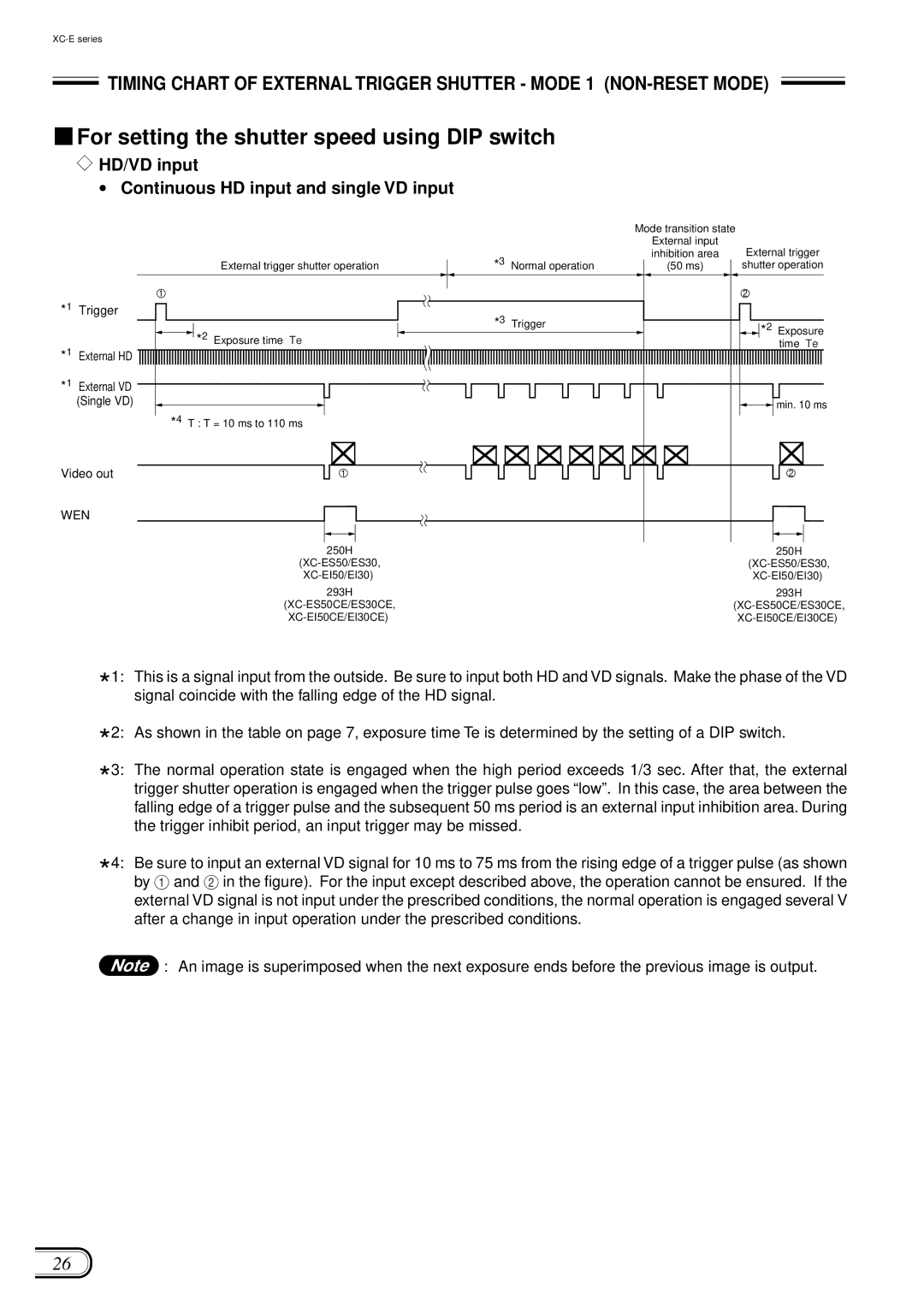
TIMING CHART OF EXTERNAL TRIGGER SHUTTER - MODE 1
 For setting the shutter speed using DIP switch
For setting the shutter speed using DIP switch
 HD/VD input
HD/VD input
∙Continuous HD input and single VD input
|
|
|
| Mode transition state | |
|
|
|
| External input | External trigger |
|
|
| *3 Normal operation | inhibition area | |
|
| External trigger shutter operation | (50 ms) | shutter operation | |
|
| 1 |
|
| 2 |
*1 | Trigger |
| *3 Trigger |
|
|
|
| *2 Exposure time Te |
| *2 Exposure | |
|
|
|
| ||
*1 | External HD |
|
| time Te | |
|
|
|
| ||
*1 | External VD |
|
|
|
|
| (Single VD) |
|
|
| min. 10 ms |
|
| *4 T : T = 10 ms to 110 ms |
|
|
|
Video out | 1 |
|
| 2 | |
WEN |
|
|
|
| |
|
| 250H |
|
| 250H |
|
|
|
| ||
|
|
|
| ||
|
| 293H |
|
| 293H |
|
|
|
| ||
|
|
|
| ||
*1:
*2: *3:
*4:
This is a signal input from the outside. Be sure to input both HD and VD signals. Make the phase of the VD signal coincide with the falling edge of the HD signal.
As shown in the table on page 7, exposure time Te is determined by the setting of a DIP switch.
The normal operation state is engaged when the high period exceeds 1/3 sec. After that, the external trigger shutter operation is engaged when the trigger pulse goes “low”. In this case, the area between the falling edge of a trigger pulse and the subsequent 50 ms period is an external input inhibition area. During the trigger inhibit period, an input trigger may be missed.
Be sure to input an external VD signal for 10 ms to 75 ms from the rising edge of a trigger pulse (as shown by 1 and 2 in the figure). For the input except described above, the operation cannot be ensured. If the external VD signal is not input under the prescribed conditions, the normal operation is engaged several V after a change in input operation under the prescribed conditions.
Note : An image is superimposed when the next exposure ends before the previous image is output.
26
